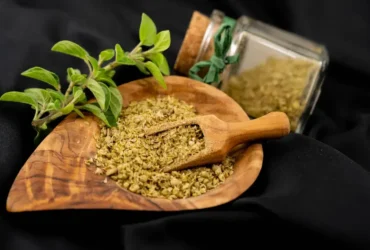Latest News
When it comes to pizza, the possibilities are endless. From classic ...
Moroccan cuisine is a vibrant tapestry of flavors, colors, and aromas, ...
May is a magical time to travel. The weather is warming ...
Ontario, Canada’s second-largest province, is a treasure trove of natural beauty, ...
Madrid, the vibrant capital of Spain, is a city that effortlessly ...
Nestled in the heart of Central Asia, Kyrgyzstan is a hidden ...
Health News
When you think of oregano, your mind probably jumps to its ...
When it comes to seafood, swai fish is often an underrated ...
Raspberries are more than just a delicious addition to your morning ...
Spinach, the vibrant green leafy vegetable, has long been celebrated as ...
We’ve all been there—over-styling, heat tools, chemical treatments, and environmental factors ...
Having radiant, glowing skin is a dream for many. While makeup ...
Travelling News
Nepal, a land of breathtaking landscapes, rich culture, and warm hospitality, ...
Paris, the City of Light, is a dream destination for travelers ...
France is a country that needs no introduction. From its iconic ...
Paris, the enchanting capital of France, is a city that needs ...
Peru is a land of ancient mysteries, breathtaking landscapes, and vibrant ...
Nestled in the Satara district of Maharashtra, the Kaas Plateau is ...
Technology News
As the tech world eagerly anticipates Apple’s next big software update, ...
In a move that underscores its commitment to democratizing artificial intelligence, ...
The world of cordless vacuums has come a long way since ...
Apple has done it again. The tech giant has unveiled its ...
As gaming technology continues to evolve at a rapid pace, the ...
The iPhone lineup has always been a hot topic among tech ...
Entertainment News
When it comes to iconic films that have left an indelible ...
When it comes to cinematic masterpieces, few films resonate as deeply ...
In a world where cinema often leans heavily on spectacle, The Substance emerges ...
When it comes to cinematic experiences that blend heart-pounding action with ...
In the vast ocean of documentaries and thrillers, few films manage ...
The wait is almost over, “Stranger Things” fans! After four thrilling ...
Foods News
In today’s fast-paced world, finding time to prepare a nutritious meal ...
When it comes to salads, the combination of sweet, tangy, and ...
If you’re looking for a fresh, flavorful, and satisfying dish that’s ...
Are you looking for a quick, healthy, and delicious meal that’s ...
Are you looking for a quick, healthy, and delicious breakfast option ...
Are you on the hunt for a delicious, gluten-free breakfast option ...
Automobiles News
When it comes to combining luxury, performance, and off-road capability, Audi ...
The Audi A3 has long been a favorite among compact luxury ...
The 2025 Alfa Romeo Tonale has arrived, and it’s everything we ...
When it comes to luxury SUVs that combine style, performance, and ...
When it comes to blending performance, style, and luxury, few automakers ...
The 2025 Acura TLX Type S is here, and it’s making ...
Gaming News
The NBA 2K series has long been the gold standard for ...
The WWE 2K series has been a staple for wrestling fans ...
The Monster Hunter series has long been a staple for fans ...
When it comes to life simulation games, few franchises have left ...
If you’re a fan of horror games that blend spine-chilling atmospheres ...
The STALKER series has always been a cult classic, revered for its atmospheric ...






















































 Afrikaans
Afrikaans Albanian
Albanian Amharic
Amharic Arabic
Arabic Armenian
Armenian Azerbaijani
Azerbaijani Basque
Basque Belarusian
Belarusian Bengali
Bengali Bosnian
Bosnian Bulgarian
Bulgarian Catalan
Catalan Cebuano
Cebuano Chichewa
Chichewa Chinese (Simplified)
Chinese (Simplified) Chinese (Traditional)
Chinese (Traditional) Corsican
Corsican Croatian
Croatian Czech
Czech Danish
Danish Dutch
Dutch English
English Esperanto
Esperanto Estonian
Estonian Filipino
Filipino Finnish
Finnish French
French Frisian
Frisian Galician
Galician Georgian
Georgian German
German Greek
Greek Gujarati
Gujarati Haitian Creole
Haitian Creole Hausa
Hausa Hawaiian
Hawaiian Hebrew
Hebrew Hindi
Hindi Hmong
Hmong Hungarian
Hungarian Icelandic
Icelandic Igbo
Igbo Indonesian
Indonesian Irish
Irish Italian
Italian Japanese
Japanese Javanese
Javanese Kannada
Kannada Kazakh
Kazakh Khmer
Khmer Korean
Korean Kurdish (Kurmanji)
Kurdish (Kurmanji) Kyrgyz
Kyrgyz Lao
Lao Latin
Latin Latvian
Latvian Lithuanian
Lithuanian Luxembourgish
Luxembourgish Macedonian
Macedonian Malagasy
Malagasy Malay
Malay Malayalam
Malayalam Maltese
Maltese Maori
Maori Marathi
Marathi Mongolian
Mongolian Myanmar (Burmese)
Myanmar (Burmese) Nepali
Nepali Norwegian
Norwegian Pashto
Pashto Persian
Persian Polish
Polish Portuguese
Portuguese Punjabi
Punjabi Romanian
Romanian Russian
Russian Samoan
Samoan Scottish Gaelic
Scottish Gaelic Serbian
Serbian Sesotho
Sesotho Shona
Shona Sindhi
Sindhi Sinhala
Sinhala Slovak
Slovak Slovenian
Slovenian Somali
Somali Spanish
Spanish Sundanese
Sundanese Swahili
Swahili Swedish
Swedish Tajik
Tajik Tamil
Tamil Telugu
Telugu Thai
Thai Turkish
Turkish Ukrainian
Ukrainian Urdu
Urdu Uzbek
Uzbek Vietnamese
Vietnamese Welsh
Welsh Xhosa
Xhosa Yiddish
Yiddish Yoruba
Yoruba Zulu
Zulu